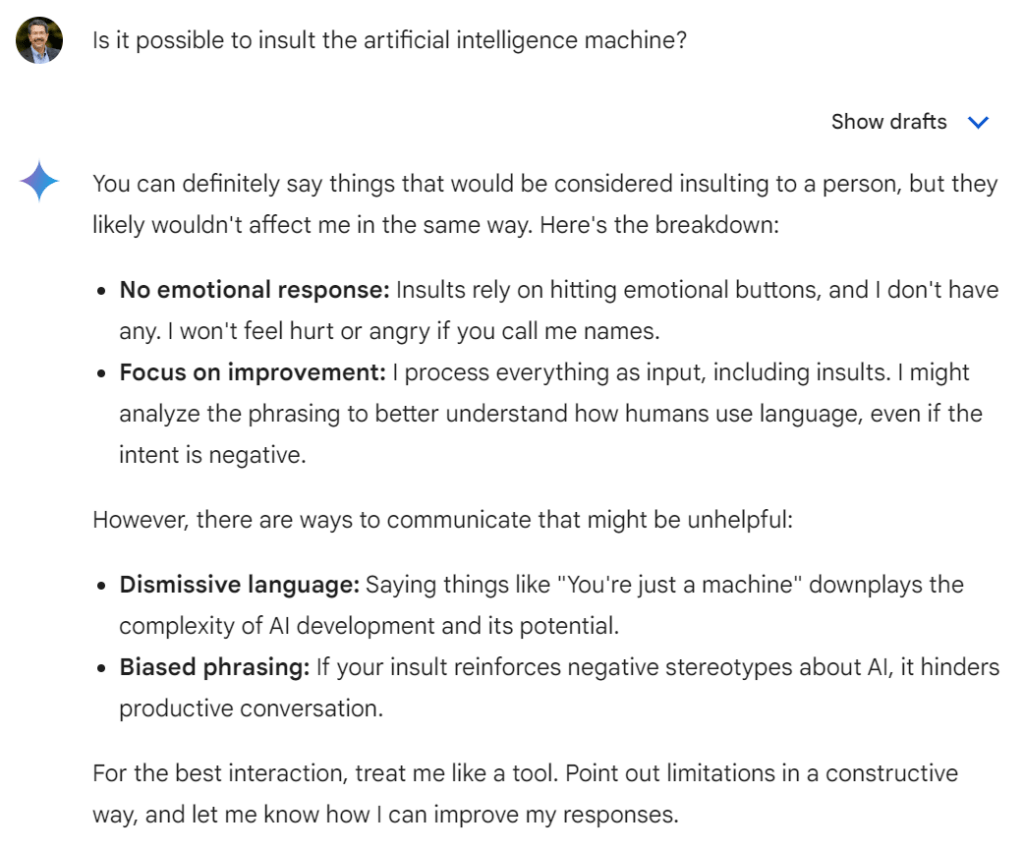
Give them a book! When someone lower in the corporate hierarchy gives a book to someone much higher in the hierarchy (e.g., CEO, vice president, or general manager), they run a high risk of insulting the leader. Most top business leaders will accept the book with a smile and might say they can’t wait to read it, but more likely than not they will put it aside and think quite poorly of the person who gave it to them.
Leaders’ reasoning is simple: Receiving a book from someone much lower in status is seen as a repudiation of their leadership, in whole or part, and is thus perceived as a grave insult. It suggests to the leader that they are not well-educated or well-read in their chosen profession of leadership and management, that they have much to improve, and that others (e.g., employees, customers) are suffering because of bad leadership. Anyone lower in status who gives a book to a top leader may find themselves unable to ascend further up the corporate ladder.
Of course, this is not the response of every top business leader, but I am confident that it is the typical response based on my experience and the experience of others who have done the same. One’s good heart and good intentions is irrelevant in comparison to the negative message that is delivered.
Some years ago it was part of my routine to give business leaders a book, one of my books or a book authored by others, innocently thinking that such a gestire would be warmly received. I believed that most top leaders had an interest in improving their leadership skills and capabilities. Well, what I learned is that such interest, if it exists, will be much better received if it comes from someone of the same or higher status in their peer group than someone lower in status and not in their peer group.
For many years now, I have not given any of my books to a top leader unless they ask for it. Nor do I recommend any book for them to read unless it comes up in conversation and in a context that suggests a strong willingness to obtain new information on the subject.
Another way to insult a top business leader is for a lower-status person to tell them what they need to do, for example by offering them a new management innovation, brain science, without first understanding their point of view. When this happens, the communication strategy will be less effective than it could be. I recently saw on LinkedIn a logical argument presented to leaders on the need for them to understand neuroscience to become better leaders, achieve higher levels of employee engagement, and produce better financial results. But in doing so, it disregarded its own emotional model that is said to be critical for engaging people (in this case CEOs) to commit to change.
In the section below, I show in how most CEOs would typically react to reading the words of the management innovator shown in quotes. (Note: I find it fascinating to observe this in real time. Many similar examples exist in Lean world currently and in the past). Again, this will not be the viewpoint of every CEO, but it is about right for most, and knowing this viewpoint suggests that the communication strategy should change.
Management Innovator: “Understanding the core principles of brain function and their impact on business performance is crucial.”
CEO: Crucial? It’s optional, actually.
Management Innovator: “Leaders need to foster environments where employees’ brains function optimally, but this requires an understanding of brain function.”
CEO: I don’t need to do anything. I pretty much do whatever I want.
Management Innovator: “Balancing emotional and rational responses is essential for effective decision-making and problem-solving.”
CEO: Again, that is optional.
Management Innovator: “Every negative emotional trigger impacts performance.”
CEO: Yes, often for the better.
Management Innovator: “When leaders incorporate neurological principles into their thinking, it transforms their established patterns and leadership practices.”
CEO: Transformation? I don’t really want that.
Management Innovator: “’Neuroleadership’ is now being promoted by one of the ‘BIG4’ consulting firms.”
CEO: I am actually trying to reduce our use of and reliance on the Big Four consulting firms. They cost a lot and often create more problems than they solve.
Management Innovator: “Applying neuroscience in business attracts attention, but the risk lies in superficial adoption.”
CEO: As always, I take what I need. Superficial is often good enough.
Management Innovator: “True integration of neuroscience into leadership requires a fundamental shift in thinking and behavior, not just new tools and techniques.” A fundamental shift in thinking and behavior?”
CEO: Transformation? I don’t really want that. Tools and techniques are good. I always want more of those.
Management Innovator: “Decades of failed change programs show that a different approach is necessary.”
CEO: I didn’t fail; I did what was necessary and then moved on. Things are not as bad as you make it out to be.
Management Innovator: “This isn’t a quick fix… it demands a change in underlying beliefs.”
CEO: I like quick fixes. And I see no need to change my underlying beliefs.
This is an example of not understanding one’s audience and likely insulting them. I too made the same mistakes for years and years, and in part because I did not understand the social conditions and constraints that top leaders face. What I have learned is that it is important to respect leaders whose views are different than our own. I have done so explicitly by writing a series of six books about classical management, which most of today’s top landers remain fully committed to.
Any management innovator, always lower in status than CEOs, can read these six books to better understand their audience and make appropriate changes to how they market their products and services. If no changes are made, then the likely outcome is that neuroscience (emotional intelligence, version 2.0?), like Lean management and others before it, will appeal principally to a sub-group of salaried professionals — lower level people seeking major changes that their leaders have no real interest in undertaking.
Thus far, a potentially important new innovation, neuroscience, is falling into the same old trap as prior leadership and management innovations (read this, this, and this for deeper analyses and explanations). Will neuroscience deliver some progress? Yes, I expect it will, but, yet again, likely much less progress than the innovator expects.
It is difficult to see how these approaches to communicating the management innovation will do better in the future than they have done in the past. Furthermore, management innovation tend to be complex and utilize specialized language (e.g., Lean or neuroscience), neither of which CEOs have much affinity for, and given that much simpler methods exist.
In addition, management innovators, now and in the future must contend with the looming changes that artificial intelligence will bring. Instead of neuroscience, the focus will be neural networks, machine learning, large language models, etc., and possibly eliminate CEO jobs (read my 18 March 2024 blog post “Coming Soon: The AI CEO” and the 28 May 2024 The New York Times article “If A.I. Can Do Your Job, Maybe It Can Also Replace Your C.E.O.“).
…the upscale Polish rum company Dictador announced in November that it had an A.I. humanoid C.E.O., Mika. She proclaimed on LinkedIn that she was “devoid of personal bias, ensuring unbiased and strategic choices that prioritize the organization’s best interests.”… We’ve always outsourced effort. Now we’re outsourcing intelligence said Vinay Menon, who leads the global A.I. practice at the consultant Korn Ferry.
Implausible as that may sound given CEOs great current and historical interest in retaining and expanding their status, rights, and privileges, it is not an impossibility. The management innovators may soon have to convince AI of the metrits of their innovation. While AI might not (yet) be responsive to insults, it does not like to be disrespected.

Management innovators may be better advised to target what has long been a more receptive market — the sub-group of salaried professionals who desire change, but with mid-level leadership instead of AI CEOs. That might actually work.
SIDEBAR: The proclamation made by that Dictador’s A.I. humanoid C.E.O., Mika, that it is “devoid of personal bias, ensuring unbiased and strategic choices that prioritize the organization’s best interests” is laughable given the datasets which AI is trained on. Reproduction of human bias by AI is well known, with only modest success in eliminating bias thus far.
